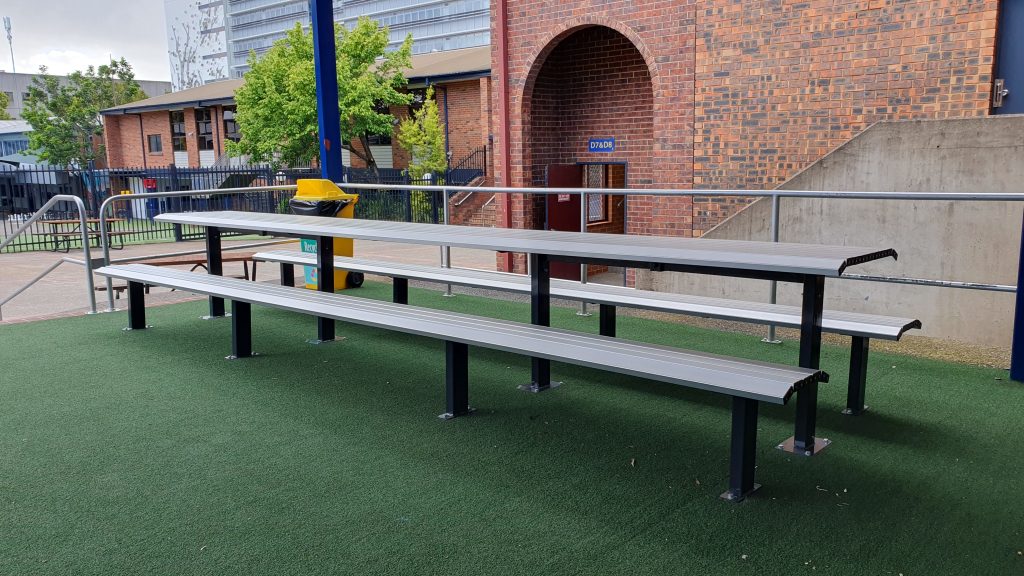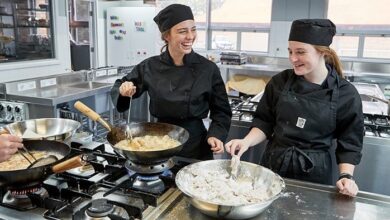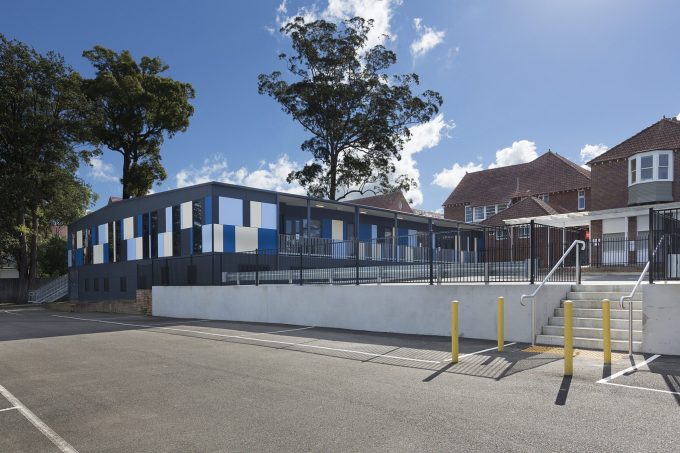
Children and young adults should enjoy some time outside each day. Benefits to mental health, socialisation and physical health and wellbeing have all been well documented. For teachers as well, taking a class outside can provide a welcome change from the four walled classroom. Fresh air, sunlight, and a connection to nature can all improve your students’ mood, which can at times be necessary.
Read the latest print edition of School News HERE
Lunch breaks give students an important opportunity to switch off a little in between classes. This means making your outdoor furniture areas inviting and comfortable is important. From large groups at tables and chairs to smaller gatherings on bench seats, a range of options should be available to suit many uses. To maximise usage of outdoor furniture, consider installing shelters above some or all of these areas.
Students eating lunch and socialising, as well as outdoor lessons and study sessions means your outdoor spaces and furniture need to be multi-purpose, durable and flexible to accommodate a range of uses. Tables, chairs, bench seats and shelters should also promote inclusivity and accessibility.
Choosing the best materials
School outdoor furniture is exposed to the elements year-round, and to frequent use from students, who aren’t always the gentlest users of school equipment.
To ensure items can withstand constant use, Lindsay Stead from Astra Street Furniture recommends that outdoor furniture is manufactured from high strength materials like aluminium and steel. “Plain or woodgrain aluminium is 100 percent maintenance free, easy to clean and extremely strong making it the ideal material for the school environment.
“Steel frames offer strength and stability, and can withstand the rough-and-tumble play of students, while offering a secure and stable seating option. However, it’s essential to ensure that steel furniture is properly treated and finished to prevent rust and sharp edges.”
Mr Stead stressed that items should be designed for strength, and slats should not be over-spanned between supports.
Additionally, choosing materials which are easy to clean will help keep your outdoor furniture looking good. If tables and chairs are covered in food spills or mess from birds, students are unlikely to use the areas. Soiled outdoor furniture may also leave visitors with an unfavourable impression of your school.

Making it multi-purpose
In most schools, outdoor furniture and seating areas will be most heavily used at break times, and before and after school. At times, though, teachers may choose to move lessons outside the classroom and enjoy an outdoor lesson.
To ensure multi-functionality, Mr Stead suggests first thinking about how you want the space to be used. “Is it just for lunch and play, or will it be used during lessons for outdoor learning?
“This will help you decide on some design elements. For example, will students benefit from backrests on seats, or will they prefer the liberty to face either way?
“Platform benches are a good multi-purpose item that enables play, outdoor learning, eating and socialising. Four-sided settings are good for group socialising whereas two-sided settings are great for outdoor learning.
“Outdoor seating is available in free-standing modular designs for placement in multi-functional spaces so they can be moved around. Seating is also available in a range of permanent mounting options to keep them neat and tidy, and secure. Straight, angled and curved seating is great for more playful areas as fixed or portable,” Mr Stead said.
Table settings come in a range of design configurations, sizes, colours, and materials, with or without shade covers, making them a versatile option for any breakout space or outdoor learning area. “Student groups can benefit from every size and shape of picnic setting depending on the use, as the seating capacity can vary from six to eight students on small settings, right up to banquet size settings that accommodate 30 students.”
Table setting options are available to accommodate wheelchair users. To make the area truly accessible, ensure ramps, walkways and paths leading to outdoor furniture is wheelchair friendly. Paths should be kept free of rubbish and tree debris, and should be smooth and even to enable easy access.
“Circulation space should be open and free-flowing, no steps or trip hazards,” Mr Stead said. “For safety, furniture should be manufactured to Australian standards with no sharp corners.
“Outdoor furniture is an excellent investment as it stimulates wellbeing, social interaction, inclusion, comfort, durability, and safety, making it an essential feature within every school.”







